Encountering an aggressive dog can be a frightening and potentially dangerous experience. While most dogs are friendly and pose no threat, certain situations—such as fear, territorial instincts, or miscommunication—can lead even the gentlest dog to behave unpredictably. Understanding how to protect yourself in these moments is not just about avoiding harm but also about respecting the boundaries and behaviors of animals.
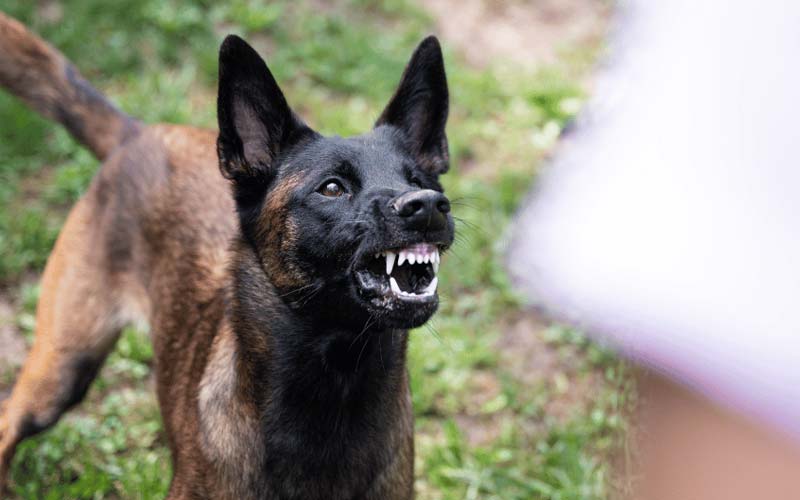
Every year, thousands of people report dog-related injuries, many of which could have been prevented with the right knowledge and approach. Whether you are a pet owner, a professional who frequently interacts with dogs, or simply someone who enjoys outdoor activities, knowing how to recognize warning signs, prevent escalation, and respond effectively during an encounter can be life-saving.
This guide will walk you through the key strategies to prevent dog attacks, handle aggressive encounters, and minimize injury should an attack occur. Armed with this information, you can navigate such situations with greater confidence and ensure both your safety and that of the animal involved.
1. Understanding Dog Aggression
Dogs are complex creatures with behaviors deeply rooted in instinct, past experiences, and environmental factors. Understanding the reasons behind their aggression and the signs they display can help you avoid potentially dangerous situations.
Types of Aggression
- Fear-Based Aggression: Fear is one of the most common triggers of aggression in dogs. When a dog feels threatened and unable to escape, it may resort to aggression as a defense mechanism. This type of aggression is often seen in dogs with traumatic past experiences or poor socialization.
- Territorial Aggression: Dogs are naturally protective of their space. Territorial aggression occurs when a dog perceives someone as an intruder, whether near its home, yard, or even its owner’s vehicle.
- Protective Aggression: Dogs are instinctively loyal and protective of their families or packs. Protective aggression can surface if a dog perceives a threat to its loved ones, including other pets, children, or owners.
- Redirected Aggression: This occurs when a dog, unable to reach the actual source of its frustration or aggression (e.g., another dog behind a fence), redirects its aggression toward the nearest person or animal.
Common Warning Signs of Aggression
Recognizing the signs of aggression early can help prevent an attack:
- Stiff Posture and Raised Hackles: A rigid stance combined with the fur along the dog’s back standing up is a clear sign of tension and readiness to act.
- Growling, Snarling, or Baring Teeth: These vocalizations are unmistakable warnings that a dog feels threatened or is preparing to defend itself.
- Intense Staring or Avoidance of Eye Contact: Some aggressive dogs may lock eyes with their perceived threat as a challenge, while others may avoid eye contact altogether as they assess the situation.
Why Dogs Attack
While dogs rarely attack without reason, understanding their triggers can help mitigate risks:
- Misinterpreted Signals from Humans: Actions that seem harmless to us, like reaching out to pet a dog on the head or leaning over them, can be perceived as threatening gestures.
- Feeling Threatened or Cornered: A dog that feels trapped or unable to escape may lash out to defend itself. This is particularly common in unfamiliar or chaotic environments.
By identifying these types of aggression and recognizing warning signs, you can take steps to diffuse the situation before it escalates. Awareness and understanding are key to coexisting safely with dogs, whether they are familiar companions or unfamiliar animals you encounter in public.
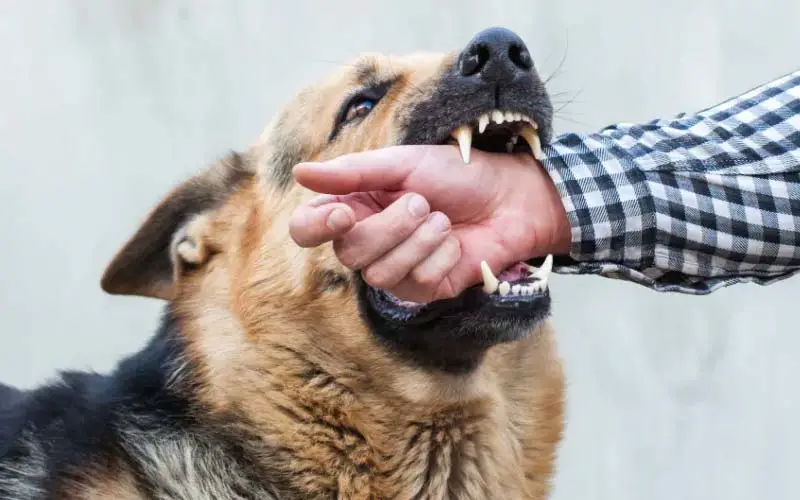
2. Preventing a Dog Attack
Preventing a dog attack starts with understanding how to behave around dogs and being mindful of their environment. Whether interacting with a dog for the first time or managing your own pet, simple precautions can go a long way in ensuring safety for everyone involved.
Behavioral Cues to Avoid
- Do Not Approach Unknown Dogs: Even the friendliest-looking dog may feel threatened if approached unexpectedly, especially when unsupervised. Always allow the dog to approach you first, giving it time to assess your presence.
- Avoid Direct Eye Contact: Staring directly into a dog’s eyes can be interpreted as a challenge or threat. Instead, glance downward or to the side, keeping your body language relaxed and non-threatening.
Best Practices for Safety
- Stay Calm and Confident: Dogs are adept at picking up on human emotions. If you appear scared or aggressive, it may escalate the situation. Maintain a calm demeanor, stand tall, and move deliberately without sudden motions.
- Teach Children About Dog Safety: Children are naturally curious but may not understand the nuances of canine behavior. Teach them to always ask permission before petting a dog and to avoid rough play or sudden movements that may startle the animal.
- Leash Your Own Dog in Public: Keeping your dog on a leash not only ensures their safety but also prevents unintentional confrontations with other dogs or people.
Environmental Awareness
Avoid Areas with Known Stray Dogs: If you know an area has stray or aggressive dogs, choose a different route or time for your walk. Stray dogs may act unpredictably, especially if they feel cornered or hungry.
Recognize Potentially Triggering Situations: Dogs may feel especially territorial in certain contexts, such as:
- Near their food or water bowls.
- When guarding toys or other possessions.
- Protecting their home or a familiar space.
By being aware of these scenarios, you can reduce the chances of inadvertently provoking a dog.
Prevention is the most effective way to avoid a dog attack. By understanding how to interpret a dog’s body language, behaving appropriately, and staying alert to environmental factors, you can minimize risk and promote safe interactions with dogs.
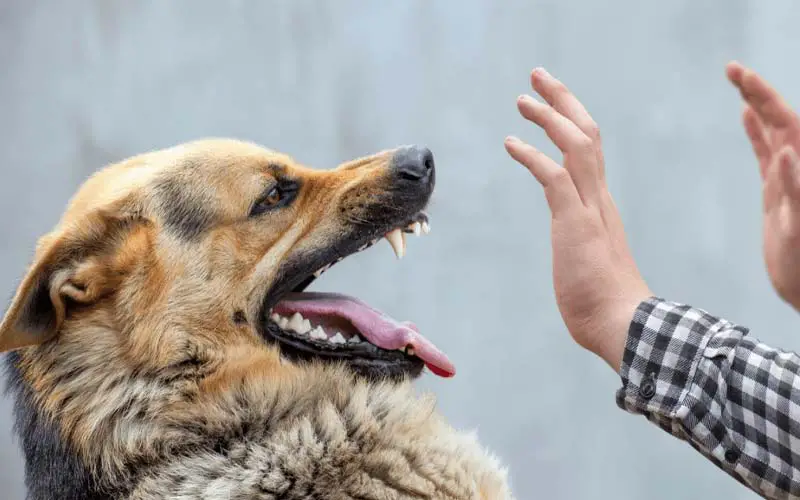
3. Responding During a Dog Attack
Facing an aggressive dog is an unnerving experience, but how you respond in the moment can make a significant difference in the outcome. Remaining calm, employing defensive strategies, and protecting yourself are crucial steps to minimize harm.
Immediate Actions
- Stay Still and Calm: The instinct to run or fight back is natural, but these actions can escalate the dog’s aggression. Instead, adopt the “Be a Tree” posture: stand still with your arms at your sides or crossed over your chest, avoiding sudden movements.
- Do Not Scream or Run: High-pitched screams or sudden movements can trigger a dog’s prey drive, making it more likely to chase or attack. Keeping your voice low and steady can help de-escalate the situation.
Defensive Strategies
- Use an Object as a Shield: Place something between you and the dog to protect yourself. A backpack, jacket, purse, or even a stick can act as a barrier, giving the dog something to bite other than you.
- Firm, Loud Commands: A strong, clear voice can sometimes deter a dog. Use words like “No!” or “Stop!” in a commanding tone. Avoid yelling in panic, as it can confuse or further agitate the animal.
Protect Yourself
- Curl Into a Ball if Knocked Down: If the dog manages to knock you down, protect your most vulnerable areas. Curl into a ball with your knees tucked to your chest and your hands covering your head and neck. Stay as still as possible until the dog retreats or help arrives.
- Avoid Retaliation Unless Necessary: Striking the dog can provoke more aggression, so this should be a last resort. If you must defend yourself, aim for non-lethal methods to distract or deter the dog without escalating the situation further.
By staying composed and using these strategies, you can reduce the risk of severe injury during a dog attack. Preparation and quick thinking are your best defenses in these rare but serious situations.
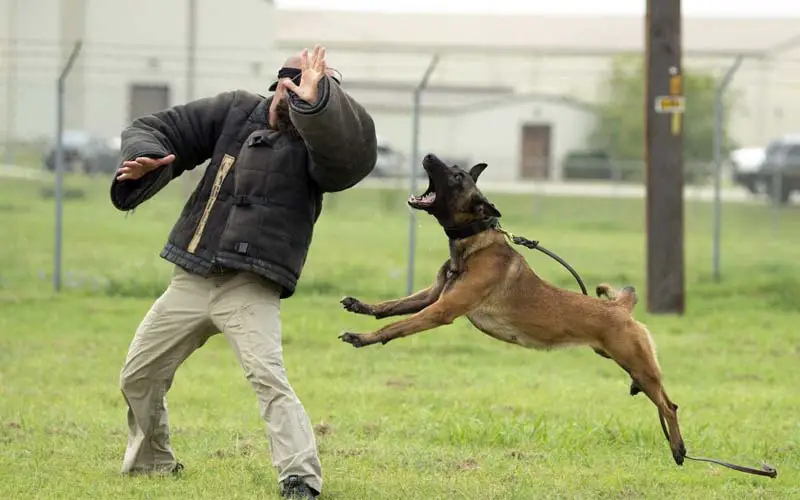
4. Post-Attack Steps
After a dog attack, prioritizing your health and safety is essential. Taking the right steps immediately following the incident can minimize medical risks, ensure accountability, and help prevent similar occurrences in the future.
Address Injuries
- Clean the Wounds Immediately: Even minor bites or scratches can introduce harmful bacteria. Rinse the area thoroughly with soap and water for several minutes to reduce the risk of infection. Apply an antiseptic if available.
- Seek Medical Attention: Dog bites can cause severe infections, including tetanus and rabies, especially if the dog’s vaccination status is unknown. Visit a healthcare professional promptly, even for seemingly superficial injuries, to receive proper treatment and preventive care.
Report the Incident
- Contact Animal Control or Local Authorities: Reporting the attack ensures the proper authorities are aware of the incident, which can help in identifying the dog and its owner and determining if the animal poses a public safety risk.
- Provide Detailed Information: If you know the dog’s owner or have seen the dog before, share this information with animal control. Include the dog’s description, behavior during the attack, and location.
Legal and Safety Considerations
- Understand Local Regulations: Laws regarding dog attacks vary by location. Some jurisdictions have strict liability rules for owners, while others may consider the dog’s history of aggression. Research local laws to understand your rights and the owner’s responsibilities.
- Consider Seeking Legal Advice: If the attack resulted in significant injuries, medical expenses, or emotional trauma, consulting a legal professional can help you determine the best course of action. Compensation for damages may be an option through insurance claims or legal proceedings.
Handling the aftermath of a dog attack is as important as knowing how to prevent one. By addressing injuries promptly, reporting the incident, and understanding legal recourse, you can protect yourself and others from further harm while ensuring accountability.
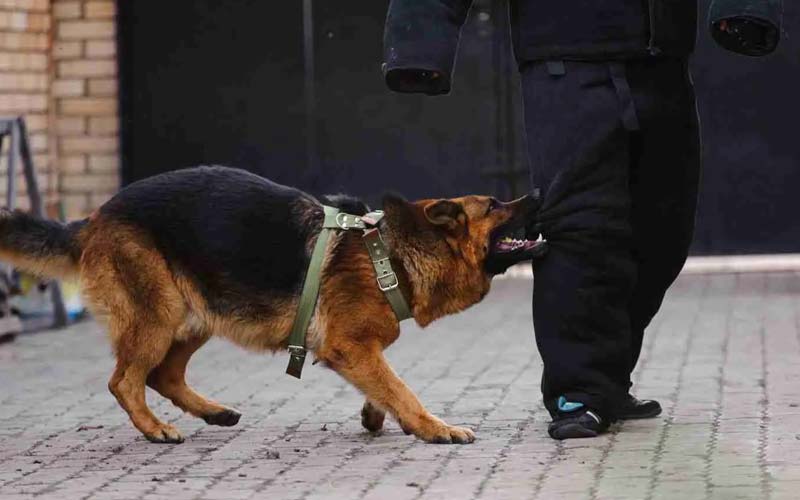
5. Building Confidence Around Dogs
Building confidence around dogs is not only about personal safety but also about fostering a healthy, positive relationship with animals. Whether you’re a pet owner or simply someone who interacts with dogs regularly, understanding their behavior, gaining proper training, and being prepared can help reduce fear and increase your confidence.
Education
- Understanding Dog Behavior: A key element in reducing fear and misconceptions is education. By learning about dog body language, communication styles, and common behavioral cues, individuals can recognize when a dog is friendly, nervous, or potentially aggressive. For example, understanding that a wagging tail doesn’t always mean a dog is happy, and recognizing signs of stress or discomfort, can help avoid misinterpreting a dog’s intentions.
- Reducing Fear Through Knowledge: Fear often arises from the unknown. When people have a deeper understanding of dog behavior, they’re less likely to react out of fear and more likely to stay calm and composed. Education empowers individuals to engage with dogs more confidently and safely.
Training Programs
Training for Dog Owners and Caregivers: For those who own dogs or work closely with them, formal training programs are invaluable. Classes on dog behavior, communication, and obedience teach people how to effectively handle their dogs in various situations, ensuring that they respond appropriately to commands and are less likely to become aggressive.
Workshops for Non-Owners:
For those who don’t own dogs but encounter them frequently, such as postal workers, delivery drivers, or even dog lovers who interact with friends’ pets, training workshops focusing on dog safety and basic behavior understanding can be crucial. These programs can teach people how to read a dog’s body language, respond appropriately to aggression, and prevent negative interactions.
Empowerment Through Preparedness
- Confidence in Emergency Situations: Knowing how to react in an emergency situation can significantly reduce panic. Understanding how to stay calm, implement defensive strategies, and protect yourself helps to avoid escalating the situation. Just as you might be prepared for other emergencies (like CPR or fire drills), being mentally and physically prepared for a potential dog encounter can make a huge difference.
- Practice Preventive Measures: Confidence comes from preparation. Regularly practicing basic dog safety measures—like calmly walking past unfamiliar dogs, recognizing warning signs, and knowing how to safely interact—ensures that when you encounter a dog, you’re not caught off guard.
By prioritizing education, seeking out training opportunities, and fostering preparedness, you can significantly reduce fear and build confidence around dogs. This not only makes interactions safer but also contributes to healthier relationships between humans and dogs, promoting a more understanding and respectful coexistence.
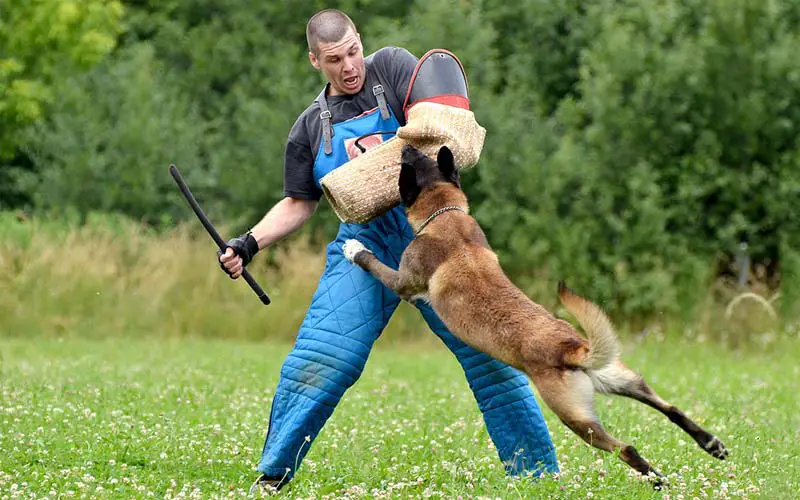
Conclusion
While the thought of a dog attack can be unsettling, the good news is that with the right knowledge and preparation, you can minimize the risks and confidently handle encounters with dogs. By understanding the different types of aggression, recognizing warning signs, and knowing how to respond appropriately in a crisis, you can protect yourself and prevent dangerous situations.
Equally important is adopting preventive measures such as avoiding unknown dogs, remaining calm, and educating others, particularly children, about dog safety. If an attack does occur, taking immediate steps to address injuries, reporting the incident, and understanding the legal considerations are crucial to ensuring both your safety and the safety of others.
Building confidence around dogs through education, training, and preparedness empowers you to approach each situation with calmness and clarity. Whether you’re a dog owner, professional, or someone who occasionally interacts with dogs, being informed and prepared is your best defense.
Take action today by educating yourself, sharing safety tips with others, and considering training programs that will equip you with the skills to handle any situation with confidence. By doing so, you’ll be better prepared to navigate the world of dogs safely and responsibly, fostering a safer environment for both humans and animals.